-
 bitcoin
bitcoin $102877.190955 USD
1.88% -
 ethereum
ethereum $3430.435064 USD
4.52% -
 tether
tether $0.999264 USD
-0.05% -
 xrp
xrp $2.307310 USD
4.49% -
 bnb
bnb $987.740692 USD
3.82% -
 solana
solana $161.947760 USD
3.97% -
 usd-coin
usd-coin $0.999712 USD
-0.05% -
 tron
tron $0.292810 USD
2.93% -
 dogecoin
dogecoin $0.179738 USD
10.70% -
 cardano
cardano $0.580716 USD
8.75% -
 hyperliquid
hyperliquid $42.463448 USD
8.40% -
 chainlink
chainlink $15.763437 USD
7.05% -
 zcash
zcash $649.595636 USD
17.21% -
 bitcoin-cash
bitcoin-cash $511.610261 USD
7.19% -
 stellar
stellar $0.292537 USD
7.91%
What is the purpose of a nonce in mining?
In cryptocurrency mining, a nonce is a random number miners adjust to find a valid block hash, crucial for solving the Proof-of-Work puzzle and securing the blockchain.
Aug 04, 2025 at 05:56 pm
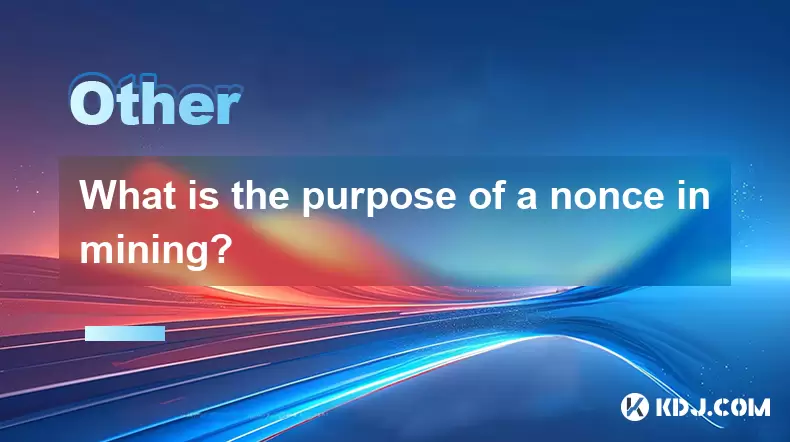
Understanding the Role of a Nonce in Cryptocurrency Mining
In the world of cryptocurrency mining, the term nonce stands for 'number used only once.' This seemingly simple concept plays a critical role in the process of creating new blocks on a blockchain. Every block added to a blockchain must meet specific cryptographic criteria, primarily involving the generation of a valid block hash. The nonce is the variable component miners adjust repeatedly to produce a hash that satisfies the network’s difficulty requirements.
When a miner assembles a block of transactions, they include a block header containing several fixed components: the previous block’s hash, the Merkle root of transactions, the timestamp, and the current difficulty target. The only element that can be altered without invalidating the block’s data is the nonce. By changing this value, miners generate different hash outputs until one meets the required condition — typically, a hash with a certain number of leading zeros.
The cryptographic hash function used in most blockchains, such as SHA-256 in Bitcoin, is deterministic yet unpredictable. This means the same input will always produce the same output, but even a minor change — like incrementing the nonce by 1 — results in a completely different hash. Miners exploit this property by iterating through millions or billions of nonce values per second in search of a valid solution.
How Miners Use the Nonce to Solve the Proof-of-Work Puzzle
The mining process is essentially a brute-force computational race to find a valid nonce. The goal is to produce a block hash that is numerically less than or equal to the network’s current difficulty target. This target is adjusted periodically to maintain a consistent block time, such as every 10 minutes in Bitcoin.
Miners begin by setting an initial nonce value, typically starting at 0. They then:
- Assemble the block header with all required data
- Insert the current nonce value
- Apply the SHA-256 hashing algorithm twice (double-SHA-256)
- Compare the resulting hash to the network difficulty target
- If the hash does not meet the target, increment the nonce and repeat
This loop continues until a miner discovers a valid hash. Once found, the miner broadcasts the block to the network for verification. Other nodes can quickly validate the solution by hashing the block header with the provided nonce — a much faster process than finding it.
Because the probability of finding a valid hash is extremely low, success depends on computational power. Mining rigs perform trillions of hash attempts per second (measured in terahashes or petahashes), cycling through nonce values at an extraordinary pace.
Nonce Size and Space Limitations
In Bitcoin, the nonce field is 32 bits long, meaning it can represent values from 0 to 4,294,967,295. This provides over 4 billion possible nonce values per block header configuration. However, in modern mining, this range is often exhausted quickly due to the immense hashing power of ASIC miners.
When the entire nonce space is exhausted without finding a valid hash, miners must modify other aspects of the block to generate new hashing possibilities. The most common method is changing the coinbase transaction, which allows a new Merkle root to be created. This effectively resets the block header, enabling another 4 billion nonce attempts.
Another technique involves adjusting the timestamp in the block header. While the timestamp must remain within a reasonable range (not too far in the past or future), slight adjustments can be made to extend the search space. These strategies ensure miners do not run out of options despite the limited nonce size.
The Relationship Between Nonce, Difficulty, and Hash Rate
The difficulty level of a blockchain directly influences how hard it is to find a suitable nonce. As more miners join the network, the total hash rate increases, prompting the network to raise the difficulty. This means more computational work is required to find a hash below the target, effectively reducing the likelihood of success per nonce attempt.
For example, at a difficulty of 1, the network might require a hash with 10 leading zeros. As difficulty increases to 20, 30, or higher, the number of required leading zeros grows, making valid hashes exponentially rarer. Miners must therefore iterate through more nonce values on average before success.
The hash rate reflects how many nonce trials the network performs per second. A higher hash rate means more attempts across the network, increasing the chance that someone will find a valid nonce within the target time frame. This dynamic balance ensures block production remains steady, regardless of fluctuations in mining power.
Nonce in Alternative Consensus Mechanisms
While the nonce is central to Proof-of-Work (PoW) systems like Bitcoin, it does not play a role in other consensus models. In Proof-of-Stake (PoS), such as Ethereum post-merge, block validation is based on staked assets rather than computational puzzles. There is no need for miners to search for a nonce, as blocks are proposed by validators selected through algorithmic fairness mechanisms.
Similarly, in Proof-of-Authority or Proof-of-Space systems, the concept of a nonce as a trial-and-error variable is absent. These models rely on identity, storage capacity, or economic commitment rather than cryptographic brute force. The nonce remains a unique feature of PoW-based blockchains, where computational effort serves as a security mechanism.
Common Misconceptions About the Nonce
A frequent misunderstanding is that the nonce itself holds intrinsic value or is permanently tied to a block’s security. In reality, once a block is validated, the nonce is simply part of the historical record. Its importance lies solely in enabling the discovery of a valid hash during the mining process.
Another misconception is that miners can predict or shortcut the nonce search. Due to the nature of cryptographic hashing, there is no mathematical formula to derive the correct nonce — it must be found through trial and error. Even with advanced hardware, success is probabilistic, not deterministic.
Some believe that a lower nonce value indicates a more secure or valuable block. This is false. Whether the nonce is 1 or 4 billion, the block’s validity depends only on whether its hash meets the difficulty target. The numeric value of the nonce has no impact on security or reward.
Frequently Asked Questions
Can a block have multiple valid nonces?Yes, it is theoretically possible for more than one nonce to produce a hash below the difficulty target. However, once a miner finds the first valid nonce, they immediately broadcast the block. The network accepts the first valid block received, making additional valid nonces irrelevant.
Is the nonce stored in the blockchain permanently?Yes, the nonce is part of the block header and is permanently recorded on the blockchain. Every node stores it as part of the block’s data, allowing full verification of the Proof-of-Work at any time.
What happens if no nonce produces a valid hash?If the entire 32-bit nonce space is exhausted without success, miners alter other block components — such as the coinbase transaction or timestamp — to generate a new block header. This creates a fresh set of nonce possibilities, ensuring the mining process can continue indefinitely.
Do all miners start with the same nonce value?Most miners begin with a nonce of 0, but they often use different block configurations due to variations in transaction selection and timing. This ensures that miners are not duplicating the exact same work, even if they start from the same nonce.
Disclaimer:info@kdj.com
The information provided is not trading advice. kdj.com does not assume any responsibility for any investments made based on the information provided in this article. Cryptocurrencies are highly volatile and it is highly recommended that you invest with caution after thorough research!
If you believe that the content used on this website infringes your copyright, please contact us immediately (info@kdj.com) and we will delete it promptly.
- Ripple (XRP) in 2026: Hold or Fold? A Look at XRP's Future and Emerging DeFi Alternatives
- 2025-11-08 18:35:01
- Zcash ZEC Coin Price Explosion: From Privacy Niche to Center Stage
- 2025-11-08 18:55:01
- Berachain Price Prediction: Navigating the Honeycomb Hype in Crypto
- 2025-11-08 18:55:01
- Arthur Hayes, Gold, and Bitcoin: A Modern Monetary Trinity?
- 2025-11-08 19:15:01
- Shiba Inu's Next Move: Navigating a Shifting Market
- 2025-11-08 19:20:01
- Pakistan's Crypto Crossroads: Balancing Opportunity with Asset-Backed Realities
- 2025-11-08 19:20:01
Related knowledge

What is a cryptographic nonce and how is it used to prevent replay attacks?
Nov 08,2025 at 05:00pm
Understanding Cryptographic Nonces in Blockchain Systems1. A cryptographic nonce is a number used only once within a specific cryptographic communicat...
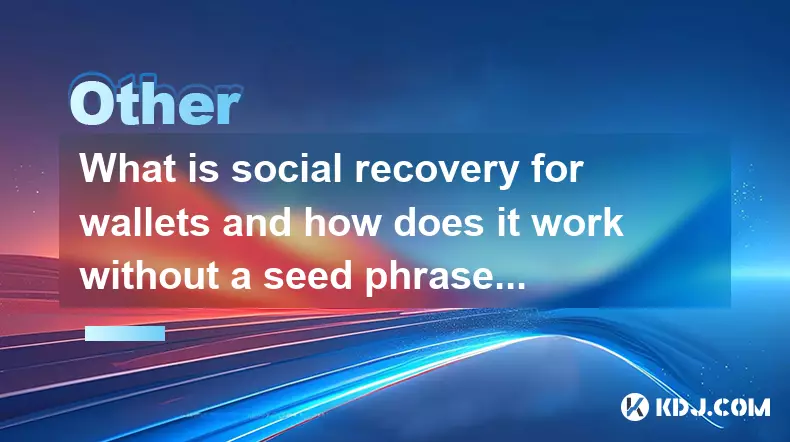
What is social recovery for wallets and how does it work without a seed phrase?
Nov 08,2025 at 08:39am
Social Recovery in Cryptocurrency Wallets1. Social recovery is a mechanism designed to help users regain access to their cryptocurrency wallets withou...
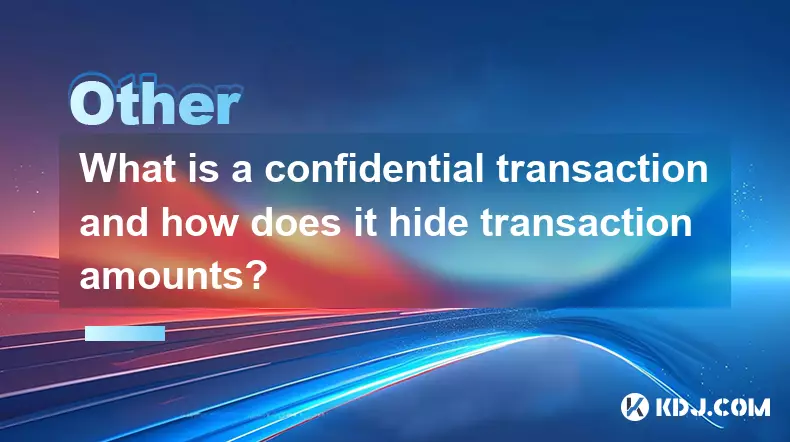
What is a confidential transaction and how does it hide transaction amounts?
Nov 08,2025 at 07:19pm
Understanding Confidential Transactions in Cryptocurrency1. Confidential transactions are a cryptographic method used in certain blockchain networks t...
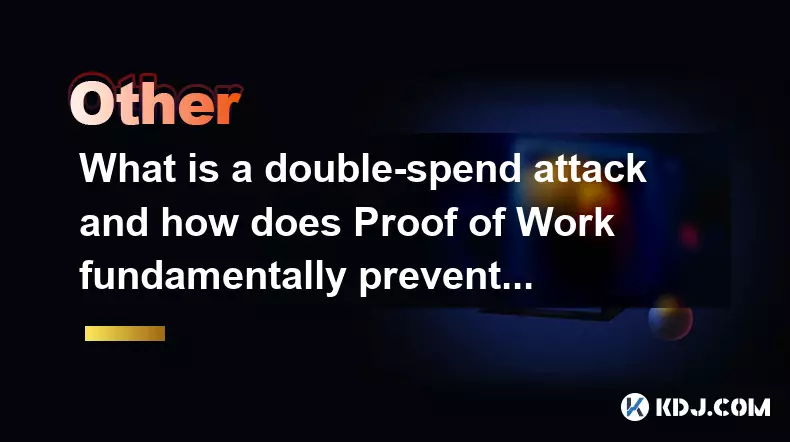
What is a double-spend attack and how does Proof of Work fundamentally prevent it?
Nov 08,2025 at 08:19pm
Understanding the Double-Spend Problem in Cryptocurrencies1. In digital cash systems, a fundamental challenge arises when a user attempts to spend the...
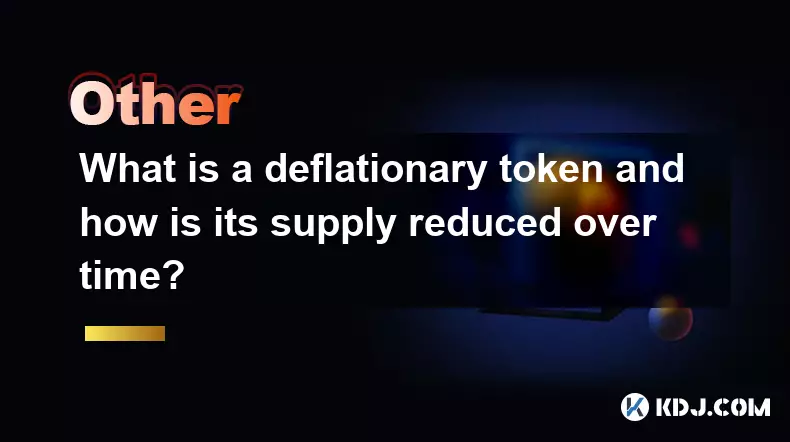
What is a deflationary token and how is its supply reduced over time?
Nov 08,2025 at 04:19pm
Understanding Deflationary Tokens in the Cryptocurrency EcosystemA deflationary token is a type of cryptocurrency designed to decrease in supply over ...
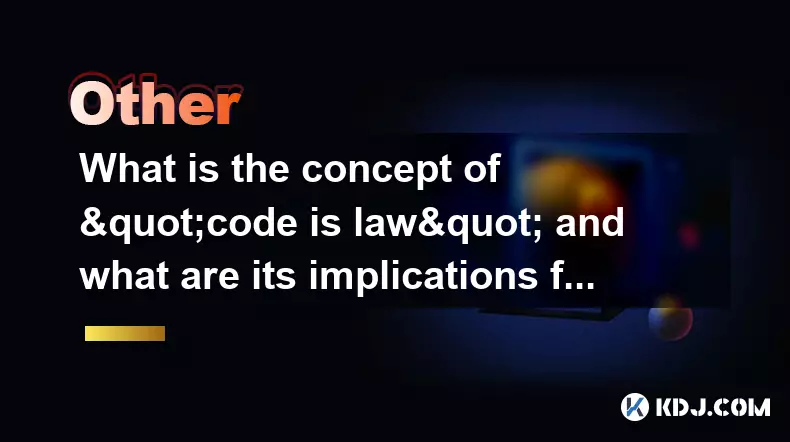
What is the concept of "code is law" and what are its implications for smart contracts?
Nov 08,2025 at 12:59pm
Understanding the Concept of 'Code is Law'1. The phrase 'code is law' originates from the cypherpunk and early blockchain communities, emphasizing tha...

What is a cryptographic nonce and how is it used to prevent replay attacks?
Nov 08,2025 at 05:00pm
Understanding Cryptographic Nonces in Blockchain Systems1. A cryptographic nonce is a number used only once within a specific cryptographic communicat...

What is social recovery for wallets and how does it work without a seed phrase?
Nov 08,2025 at 08:39am
Social Recovery in Cryptocurrency Wallets1. Social recovery is a mechanism designed to help users regain access to their cryptocurrency wallets withou...

What is a confidential transaction and how does it hide transaction amounts?
Nov 08,2025 at 07:19pm
Understanding Confidential Transactions in Cryptocurrency1. Confidential transactions are a cryptographic method used in certain blockchain networks t...

What is a double-spend attack and how does Proof of Work fundamentally prevent it?
Nov 08,2025 at 08:19pm
Understanding the Double-Spend Problem in Cryptocurrencies1. In digital cash systems, a fundamental challenge arises when a user attempts to spend the...

What is a deflationary token and how is its supply reduced over time?
Nov 08,2025 at 04:19pm
Understanding Deflationary Tokens in the Cryptocurrency EcosystemA deflationary token is a type of cryptocurrency designed to decrease in supply over ...

What is the concept of "code is law" and what are its implications for smart contracts?
Nov 08,2025 at 12:59pm
Understanding the Concept of 'Code is Law'1. The phrase 'code is law' originates from the cypherpunk and early blockchain communities, emphasizing tha...
See all articles





















![The Graph Price Prediction [GRT Crypto Price News Today] The Graph Price Prediction [GRT Crypto Price News Today]](/uploads/2025/11/07/cryptocurrencies-news/videos/690d4df44fe69_image_500_375.webp)



















































